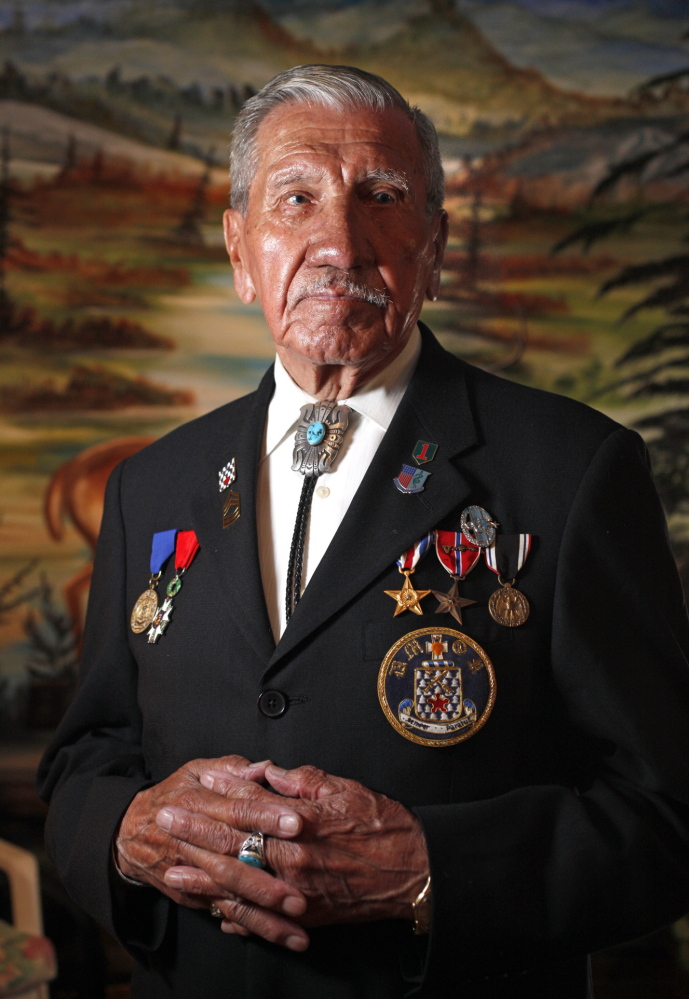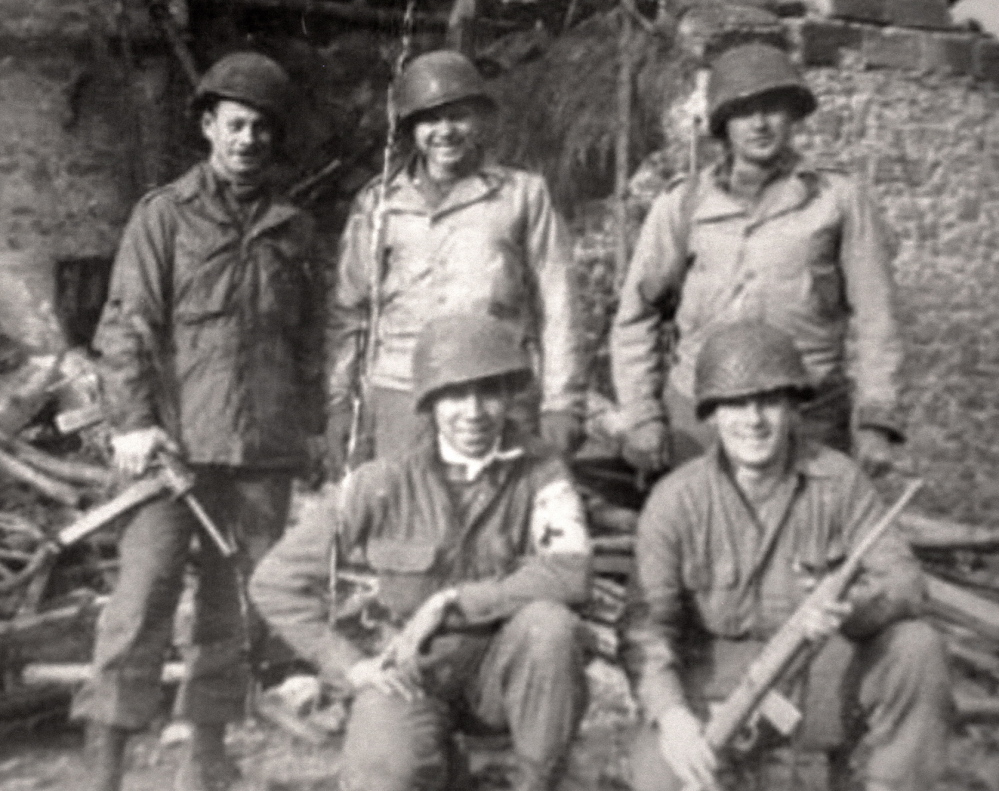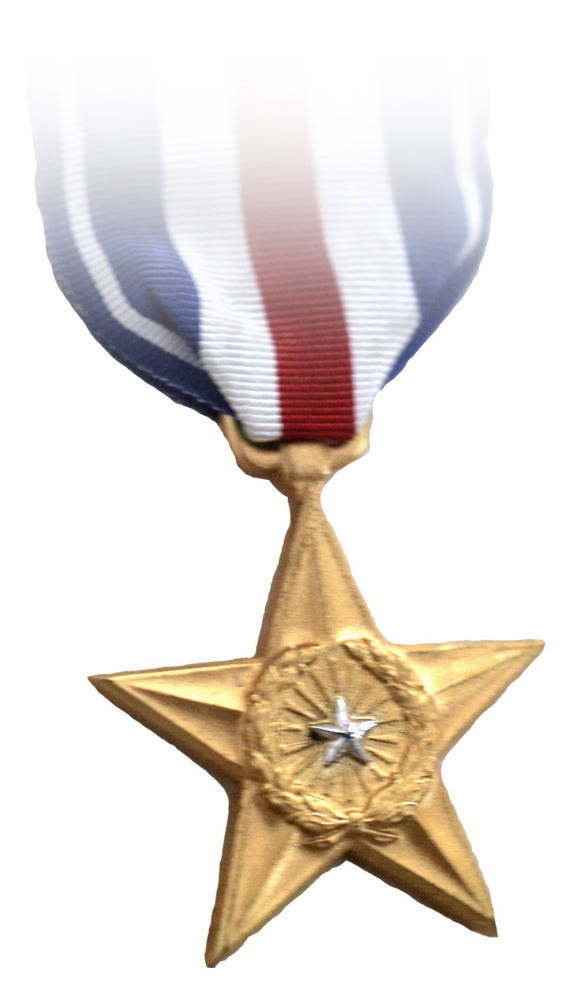Seventy years later, Charles Norman Shay still hears mortar shells screaming overhead and bullets ricocheting off the death-trap landing craft.
He still sees the flesh of fellow soldiers ripped apart by waves of enemy fire, their bodies falling limp into the ocean, their blood mixing with sea and sand.
The ghosts of those fallen soldiers keep calling Shay back to the beaches of Normandy.
“I go back to remember all the comrades in arms I left there that are still wandering around on the beach,” said Shay, who lives in Old Town and flew to France this week to mark the 70th anniversary of D-Day, the largest sea invasion in U.S. military history.
It began on the morning of June 6, 1944. Shay, then a 19-year-old medic, was among the first Allied soldiers to jump from their transport boats into chest-deep sea water and on to Omaha Beach. It was 6:30 in the morning.
By the time he rested, he had tended to dozens if not hundreds of dead and dying men. As many as 10,000 Allies were killed or wounded during the invasion.
“This was not a sightseeing trip,” Shay said in a phone interview. “There was a lot of firepower going on – overhead from the armada of the ships, and the Germans were firing back. Once we made the invasion, we were under constant machine gun, small arms and mortar fire.”
Shay will tell his story in a new History Channel documentary, “D-Day in HD.” Made by South Portland-based Lone Wolf Media, the documentary begins at 9 p.m. Friday and continues at 9 p.m. Saturday.
Finding peace and resolution in sharing his experiences, Shay has told his story many times. He has appeared on TV and written a book, and he has been back to Normandy to acknowledge previous anniversaries.
He is there this week to participate in ceremonies marking the 70th anniversary, including one that celebrates his Indian heritage.
“When the ramps went down on the landing craft, many of the men standing in the front of the boat were hit immediately,” Shay said. “These were men loaded down with equipment, and they just sank to the bottom and drowned.”
Shay did what he was trained to do, which was to administer aid. He pulled dozens of men from the water to the sand and did what he could to patch them up. But bandages and morphine go only so far. He knew that many of the men he was treating would soon die.
He could be of no use to anyone if he didn’t survive. “It was every man for himself,” he said. “It was chaos. The only thing on my mind was survival.”
Survivors who made it to the beach fended for themselves and eventually regrouped into platoons, many of which were without officers, who had been killed or wounded.
From Shay’s perspective tending to maimed men in the water and on the beach, the Allies didn’t turn D-Day into victory until they penetrated the gun nests where the Germans fired their powerful weapons, which had retarded the onslaught of Allies in the water and on the beach below.
“If we had been turned back, it would have been disastrous,” he said.
It took weeks, but the Allies made it inland, eventually liberating France from its German aggressors.
Kirk Wolfinger, president of Lone Wolf Media, said many D-Day anniversary stories recount the invasion, but few stick with the story through June and July of 1944, when the fighting moved from the beaches to the hedgerows between the coast and the town of St. Lo, just a few miles inland.
“D-Day was never just about a day,” Wolfinger said. “It’s about the day of the invasion and the next four, five or six weeks of fighting, which was some of the most vicious fighting. It wasn’t until the Allies captured St. Lo that they said, ‘We’re here and we’re not going back.’ ”
“D-Day in HD” tells the story of the summer of 1944 through archival footage, interviews with survivors and small scenes that were shot to fill in where the archival footage left off. Some of those filler scenes were shot in Maine, including a short sequence on a beach in Scarborough.
Shay is the star of the movie, Wolfinger said.
“We taped about 90 minutes with him, and even though what we were talking about was 70 years later, it was still very present in his mind,” Wolfinger said. “The details, the sequence of events, no amount of prompting was necessary for him. He is reserved, but when he talks about this subject, he doesn’t hold back.”
That wasn’t always the case. For more than 60 years, Shay barely gave voice to D-Day. He lived in Austria most of that time, having fallen in love with an Austrian woman during the war. Lilli was a waitress at a restaurant he frequented in Vienna, where he was stationed after the war. They became friendly and wed in 1950.
Shay re-enlisted after the war and served in the U.S. military for many more years. Over the course of his military career, he won Silver and Bronze stars, as well as the French Légion d’Honneur.
He and Lilli had one son, who lives in Rhode Island. Though he was born in Rhode Island and raised in Maine, Shay made his life in Austria, not returning to Maine until 2003. Lilli was sick when they came here, and died soon after they arrived.
Shay thinks his wife lived long enough to ensure his safe return stateside.
It was after he resettled in Maine that he became active in veterans groups. An anthropology professor at the University of Maine got him to open up about the war.
Shay talks about his D-Day experiences because he wants people to understand the magnitude of the war. There aren’t many veterans left from those days, he said, so it’s important that those who remain tell their stories.
“We are disappearing, very slowly. Every day, we are disappearing,” he said.
He’s in Normandy to remember the men who disappeared 70 years ago. They never knew the joy of marriage, the thrill of parenting, the triumph of life.
It’s those men and their ghosts he will visit this week.
Send questions/comments to the editors.






Comments are no longer available on this story